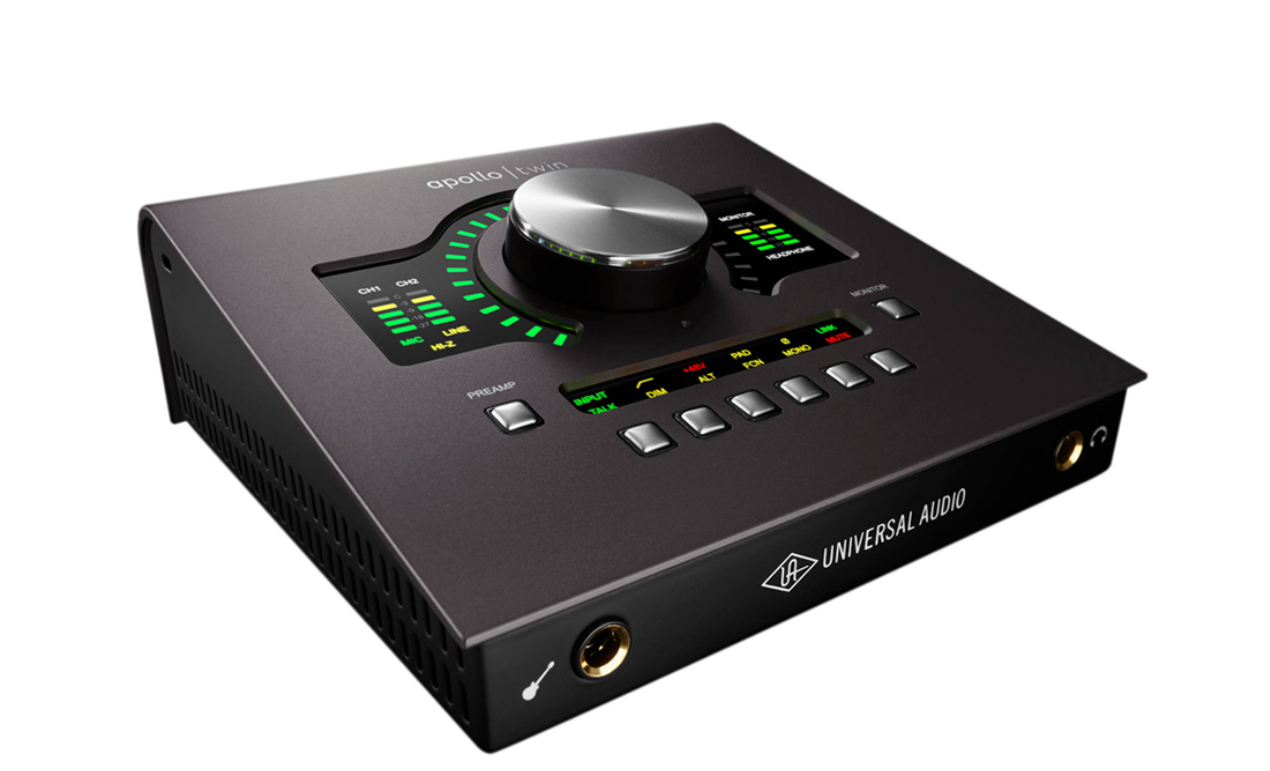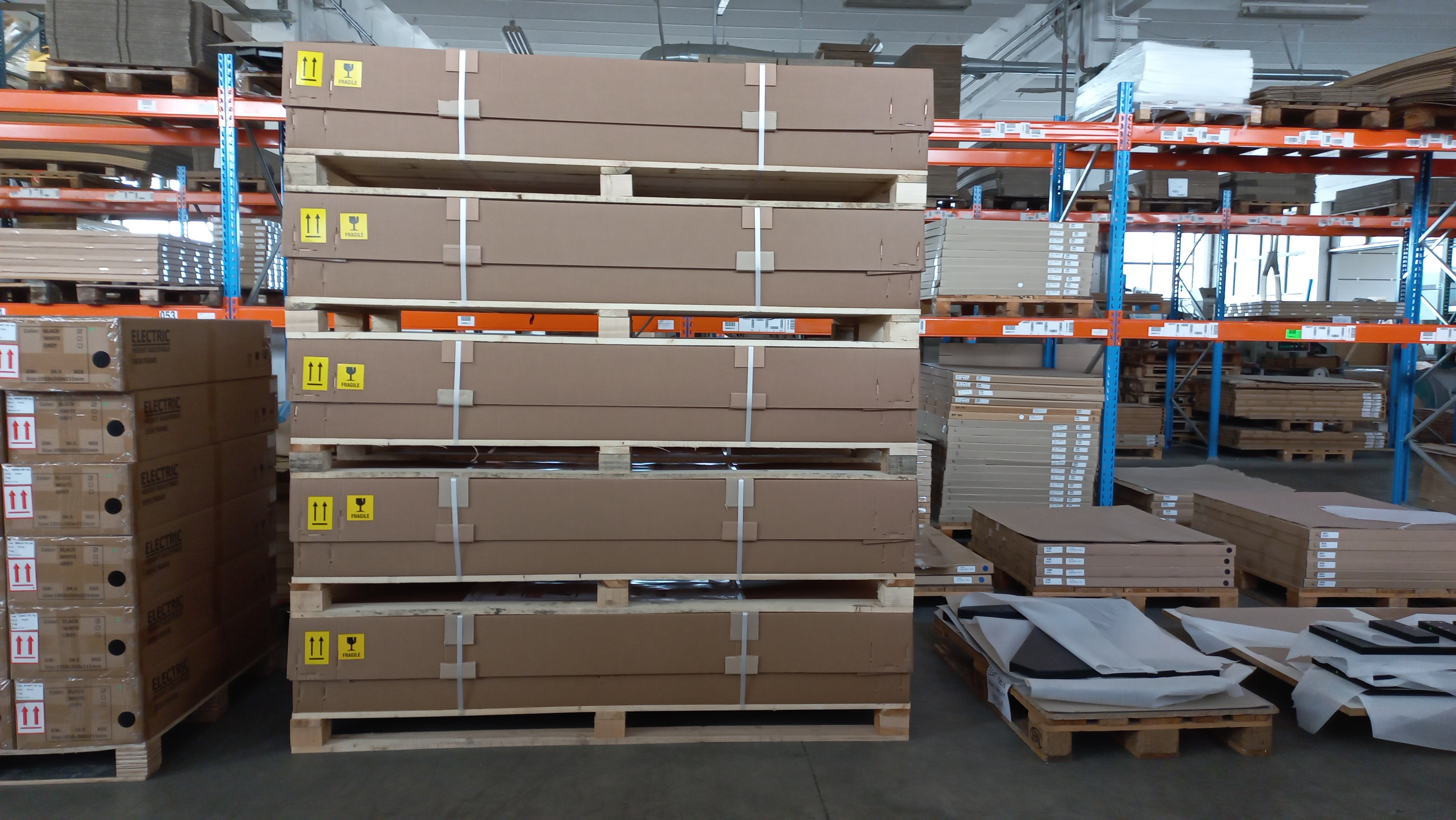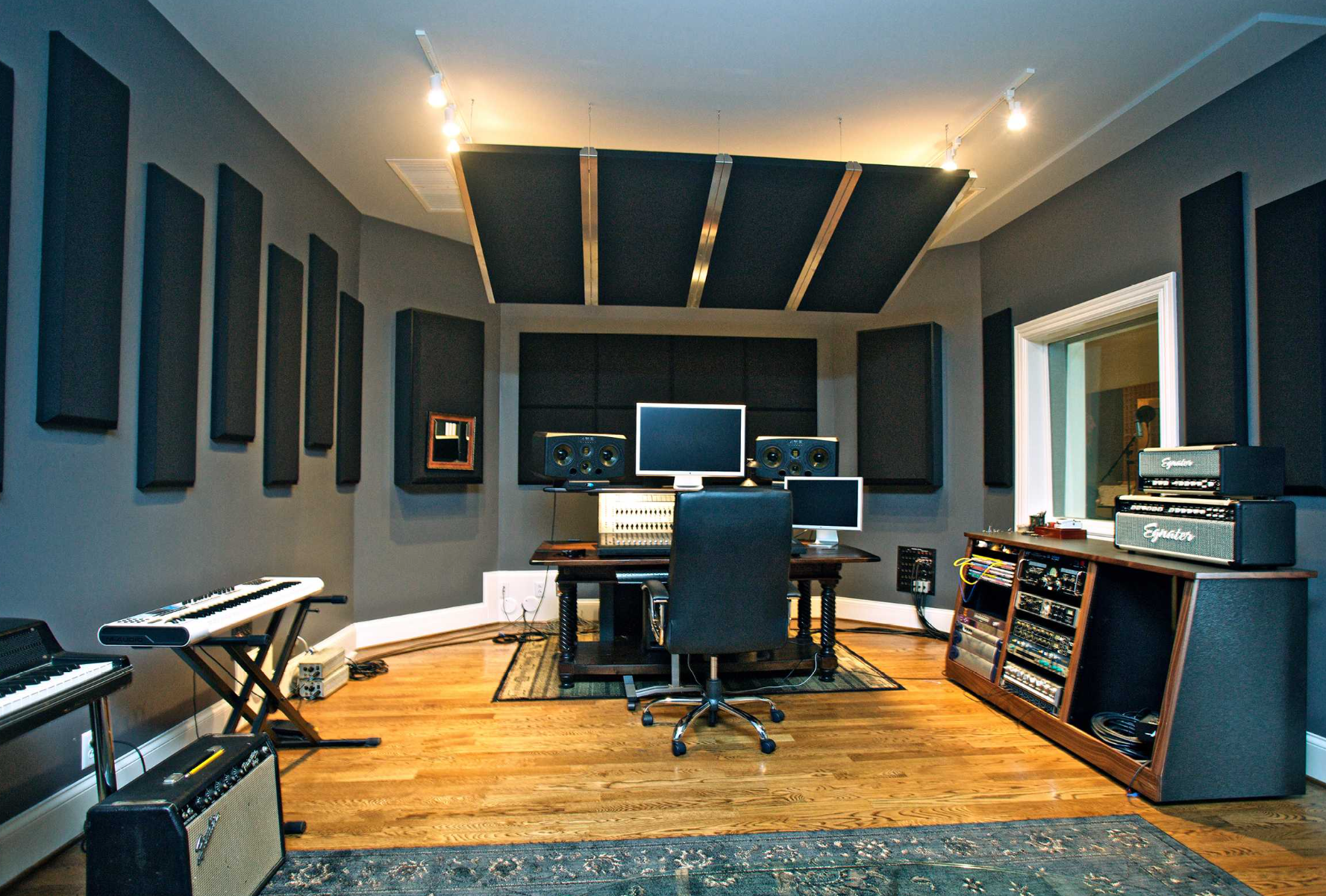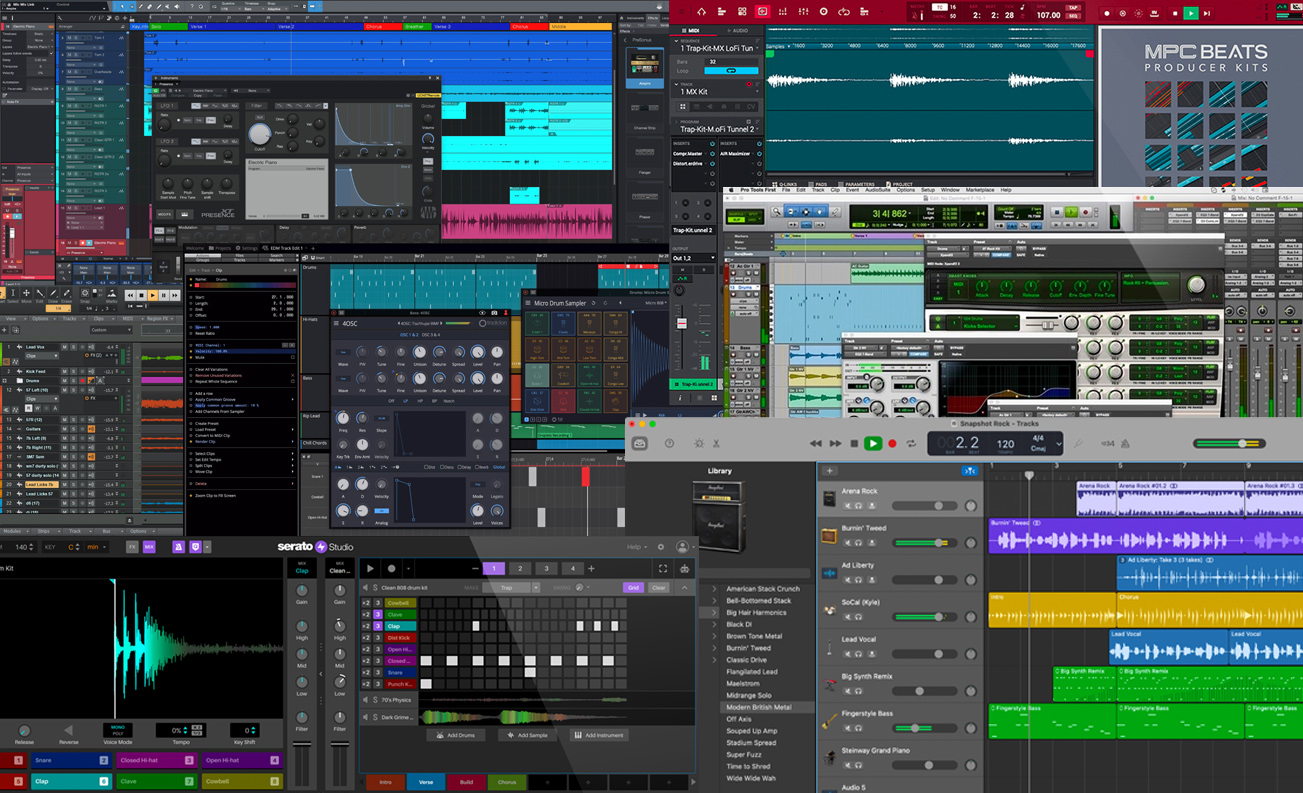Choosing the right audio interface is crucial for successful home recording. There are various factors and features to consider when making this decision. This comprehensive guide will provide you with the information you need to choose the best audio interface for your home recording setup.
Key Takeaways:
- Understand the importance of choosing the right audio interface for home recording
- Consider the specific features and functions that are essential for your recording needs
- Take into account the I/O configuration and computer connectivity options
- Pay attention to tech specs like bit depth, sample rate, dynamic range, and frequency response
- Research recommended audio interfaces and read reviews before making a purchase
What is an Audio Interface?
An audio interface is a crucial component of your home recording setup. It is a hardware device that connects your microphones and other audio gear to your computer for recording and playback. Think of it as the bridge between your analog audio equipment and your digital recording software.
The main function of an audio interface is to convert analog signals into digital audio information that your computer can process, and vice versa. It ensures high-quality audio recording and playback by providing the necessary inputs and outputs for your recording needs. Typically, an audio interface includes inputs for microphones and instruments, outputs for studio monitors and headphones, and may feature additional digital inputs and outputs.
By using an audio interface, you can achieve better sound quality, lower latency, and more versatile I/O configurations compared to relying solely on the sound card built into your computer. This is especially important for recording and monitoring production-quality audio, as well as for multi-track recording.
What is an Audio Interface?
Why do You Need an Audio Interface?
Using an audio interface is essential for anyone involved in home recording. It offers a range of advantages over relying on your computer’s built-in sound card. One of the main advantages is improved sound quality. Sound cards often have limited sound quality, whereas audio interfaces are designed specifically for high-quality recording and playback. They provide cleaner, clearer audio with better dynamic range and lower noise levels.
Another advantage of using an audio interface is the increased number of inputs and outputs. Sound cards usually have only one or two audio inputs, which may not be sufficient for recording multiple sources simultaneously. In contrast, audio interfaces offer a variety of inputs for microphones, instruments, and other audio equipment. This versatility allows you to capture and record different audio sources with ease.
Furthermore, audio interfaces provide lower latency compared to sound cards. Latency is the delay between the input signal and the output sound. Sound cards often have higher latency, which can cause monitoring issues and hinder your recording experience. With an audio interface, you can achieve minimal latency, ensuring a seamless recording and monitoring process.
The Difference Between Audio Interfaces and Sound Cards
“An audio interface is like upgrading from a bicycle to a sports car. It offers superior performance, versatility, and control, taking your home recording to the next level.”
When comparing audio interfaces and sound cards, there are fundamental differences to consider. Sound cards are typically designed for general audio playback, such as gaming and watching videos, but they may not have the necessary features for professional recording. On the other hand, audio interfaces are specifically built for recording and offer better sound quality, more inputs and outputs, and lower latency.
Overall, the audio interface is an indispensable tool for achieving professional-quality recordings in a home recording setup. It provides improved sound quality, greater flexibility, and reduced latency, making it a worthwhile investment for any aspiring or experienced musician, podcaster, or content creator.
| Audio Interfaces | Sound Cards |
|---|---|
| Designed for professional recording | Designed for general audio playback |
| Better sound quality | Limited sound quality |
| More inputs and outputs | Fewer inputs and outputs |
| Lower latency | Higher latency |
Choosing the Right I/O Configuration
When selecting an audio interface, one of the critical factors to consider is the input/output (I/O) configuration. The number and type of inputs and outputs will depend on your specific recording needs. Different types of audio sources require different input options, and the available output options determine the flexibility of your monitoring and playback capabilities.
Let’s take a closer look at some important I/O configuration options:
Microphone Preamps:
Microphone preamps are essential for recording vocals and acoustic instruments. Look for an audio interface that offers high-quality preamps with sufficient gain and low noise levels. Additionally, if you plan to use condenser microphones, ensure that the preamps provide phantom power to supply the necessary voltage.
Instrument-Level Inputs:
If you’re planning to connect guitars, basses, or other instruments directly to your audio interface, make sure it has instrument-level inputs. These inputs are optimized to capture the unique impedance and signal level of instruments, resulting in better sound quality and accurate recordings.
Line-Level Inputs:
Line-level inputs are typically used for connecting external hardware processors, synthesizers, or other line-level audio sources. These inputs allow you to integrate outboard gear into your recording setup and provide greater flexibility in your signal routing.
Digital I/O:
Consider whether your audio interface needs digital input/output options. Digital I/O allows you to connect external digital devices and expand your recording capabilities. Common digital formats include S/PDIF, ADAT, and AES/EBU, enabling you to connect additional audio interfaces, external converters, or digital effects processors.
By carefully considering the I/O configuration options that best suit your recording needs, you can ensure that your audio interface will provide the necessary connectivity and versatility for your home recording setup.
| I/O Configuration | Key Features |
|---|---|
| Microphone Preamps | – High-quality preamps – Sufficient gain and low noise levels – Phantom power for condenser microphones |
| Instrument-Level Inputs | – Optimized for guitars, basses, and other instruments – Improved sound quality and accurate recordings |
| Line-Level Inputs | – Connect external hardware processors, synthesizers, etc. – Greater flexibility in signal routing |
| Digital I/O | – Connect external digital devices – Expand recording capabilities – Formats: S/PDIF, ADAT, AES/EBU |
Computer Connectivity Options
When it comes to choosing an audio interface for your home recording setup, one crucial factor to consider is the computer connectivity options available. Different types of audio interfaces offer various connection types, each with its own advantages. Understanding these options will help you select the right interface that suits your needs.
One common and versatile connection type is USB. USB audio interfaces are widely supported and compatible with most computers, making them a popular choice for home recording enthusiasts. They offer a good balance between data transfer speed and convenience.
If you require high-speed data transfer and low latency, Thunderbolt audio interfaces are worth considering. Thunderbolt provides lightning-fast data transfer, making it ideal for professional studios and demanding recording applications. It offers superior performance and is commonly found in high-end audio interfaces.
Table: Comparison of Audio Interface Connection Types
| Connection Type | Advantages | Suitable For |
|---|---|---|
| USB | Widely supported, convenient | Most home recording setups |
| Thunderbolt | High-speed data transfer, low latency | Professional studios, demanding applications |
“USB audio interfaces are a great choice for beginners and those on a budget. They offer decent performance and compatibility with most computers, making them a reliable option for home recording.” – Audio Engineer
Another connection type to consider is FireWire. FireWire audio interfaces are known for their reliable data transfer rates and are favored by some recording professionals. However, it’s important to note that FireWire ports are becoming less common on newer computers, so compatibility may be a concern.
If you require even faster speeds and have a computer with available PCIe slots, PCIe audio interfaces are worth exploring. PCIe interfaces offer the highest data transfer speeds, ideal for high track counts and low latency recording. However, they are typically found in professional-grade setups and may require additional hardware installation.
When choosing an audio interface, it’s essential to consider the computer connectivity options that best suit your recording needs and the compatibility with your computer’s ports. Selecting the right connection type will ensure seamless integration between your audio interface and your computer, allowing you to focus on creating great recordings.
Understanding Tech Specs
When choosing an audio interface for your home recording setup, it’s important to understand the technical specifications that can greatly impact its performance. Here are the key tech specs to consider:
Bit Depth:
Bit depth refers to the number of bits used to represent each audio sample. A higher bit depth provides a greater dynamic range and ensures more accurate and detailed audio reproduction. Common bit depths are 16-bit and 24-bit, with 24-bit offering higher audio fidelity.
Sample Rate:
Sample rate determines the number of samples taken per second to capture audio information. It is measured in kilohertz (kHz). Higher sample rates, such as 44.1kHz or 48kHz, capture more detailed sound and reproduce audio with greater accuracy.
Dynamic Range:
Dynamic range refers to the difference between the loudest and quietest sounds an audio interface can reproduce. A higher dynamic range ensures that subtle details and nuances in your recordings are preserved and accurately reproduced.
Frequency Response:
Frequency response indicates the range of frequencies that an audio interface can capture and reproduce. It is typically measured in Hertz (Hz) and represented as a range (e.g., 20Hz-20kHz). The wider the frequency response, the more accurately your recordings will capture the full spectrum of sound.
Total Harmonic Distortion + Noise (THD+N):
THD+N measures the amount of distortion and noise introduced by an audio interface during the recording and playback process. A lower THD+N value indicates cleaner and more transparent sound reproduction, while a higher value may introduce unwanted artifacts and degrade audio quality.
Understanding these tech specs will help you make an informed decision when choosing an audio interface that meets your specific recording needs. Remember to consider factors such as bit depth, sample rate, dynamic range, frequency response, and THD+N to ensure high-quality recordings in your home studio.
| Tech Spec | Description |
|---|---|
| Bit Depth | The number of bits used to represent each audio sample. Higher bit depth provides greater dynamic range and audio fidelity. |
| Sample Rate | The number of samples taken per second to capture audio information. Higher sample rates capture more detailed sound. |
| Dynamic Range | The difference between the loudest and quietest sounds an audio interface can reproduce. Higher dynamic range preserves subtle details in recordings. |
| Frequency Response | The range of frequencies an audio interface can capture and reproduce. Wider frequency response captures the full spectrum of sound. |
| THD+N | Measures the amount of distortion and noise introduced by an audio interface. Lower THD+N values indicate cleaner sound reproduction. |
Additional Considerations
When choosing an audio interface for your home recording setup, there are a few additional factors to consider. First and foremost, think about your budget. Determine how much you are willing to invest in an audio interface that meets your needs. Keep in mind that higher-quality interfaces often come with a higher price tag, but they can provide better sound quality and more features.
Another important consideration is the build quality of the audio interface. If you plan on transporting your interface frequently or if you have a busy recording schedule, you’ll want to make sure that it is durable and reliable. Look for interfaces that are well-built and can withstand the demands of regular use.
Monitor Control and Low Latency Mixing
Having comprehensive control over your monitors and the ability to achieve low latency mixing is essential for a smooth recording and monitoring experience. Look for audio interfaces that offer features like dedicated monitor volume control, headphone outputs with their own level adjustments, and a direct monitoring option. These features allow you to fine-tune the sound during recording and ensure accurate monitoring of your recordings.
Additionally, check if the audio interface includes software or bonus features that can enhance your workflow. Some interfaces come bundled with recording software, virtual instrument plugins, or other useful tools that can help you get started right away. These added extras can save you both time and money in the long run.
| Audio Interface Budget | Audio Interface Build Quality | Monitor Control and Low Latency Mixing | Included Software and Bonus Features |
|---|---|---|---|
| Set a budget based on your needs and prioritize investing in a high-quality interface. | Consider the build quality, durability, and reliability of the interface, especially if you plan to transport it frequently. | Look for interfaces that offer comprehensive monitor control and low latency mixing for optimal recording and monitoring. | Check for any included software or bonus features that can enhance your workflow. |
Recommended Audio Interfaces
When it comes to choosing the best audio interface for your home recording needs, there are several top brands and models to consider. These audio interfaces offer excellent features and performance, ensuring high-quality recordings for your home studio setup. Here are some recommended audio interfaces that have received positive reviews and are popular among home recording enthusiasts:
PreSonus Studio 24c:
The PreSonus Studio 24c is a compact and portable audio interface that offers professional-grade sound quality. It features two combo mic/instrument inputs, MIDI I/O, and high-quality preamps. With its USB-C connectivity, it provides fast and reliable audio data transfer, making it a great choice for any home recording setup.
IK Multimedia Axe I/O:
The IK Multimedia Axe I/O is a versatile audio interface designed specifically for guitarists. It features a dedicated instrument input with advanced tone-shaping capabilities, allowing you to achieve studio-quality guitar recordings. It also offers comprehensive I/O options, including MIDI connectivity and high-quality preamps.
Universal Audio Apollo X4:
The Universal Audio Apollo X4 is a high-end audio interface that delivers exceptional sound quality and processing power. It features four mic/line inputs, four line outputs, and two headphone outputs. With its built-in UAD-2 processing, it allows for real-time tracking and mixing with UAD plug-ins, ensuring professional-level results.
These are just a few examples of the recommended audio interfaces available for home recording. It’s important to research and read reviews to find the best audio interface that suits your specific recording needs. Consider factors such as your budget, required I/O configuration, and desired features to make an informed decision. With the right audio interface, you can enhance your home recording setup and achieve professional-quality audio recordings.
| Brand/Model | Features |
|---|---|
| PreSonus Studio 24c | Compact and portable design, USB-C connectivity, high-quality preamps |
| IK Multimedia Axe I/O | Dedicated instrument input with tone-shaping capabilities, comprehensive I/O options |
| Universal Audio Apollo X4 | Exceptional sound quality, built-in UAD-2 processing, multiple inputs and outputs |
Conclusion
Choosing the right audio interface is crucial for achieving high-quality recordings in your home recording setup. By considering factors such as I/O configuration, computer connectivity, tech specs, and additional features, you can make an informed decision that suits your specific recording needs.
When selecting an audio interface, it’s important to set a budget that allows for a high-quality device. Investing in a well-built and durable interface will ensure long-term versatility and reliability, especially if you plan to transport it frequently.
Remember to prioritize interfaces that offer comprehensive monitor control and low latency mixing. These features will optimize your recording and monitoring capabilities, allowing you to achieve the best possible audio quality.
Make sure to research and read reviews on top audio interface brands, such as PreSonus, IK Multimedia, and Universal Audio, to find the best option for you. Popular models like the PreSonus Studio 24c, IK Multimedia Axe I/O, and Universal Audio Apollo X4 are known for their excellent features and performance.
In conclusion, selecting the right audio interface for your home recording setup is a crucial decision that can greatly impact the quality of your recordings. Consider your specific needs and use the information in this guide to choose an interface that will provide you with optimal recording and monitoring capabilities.





